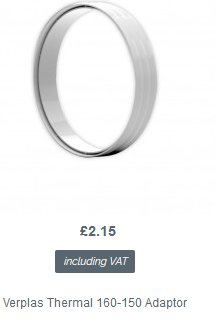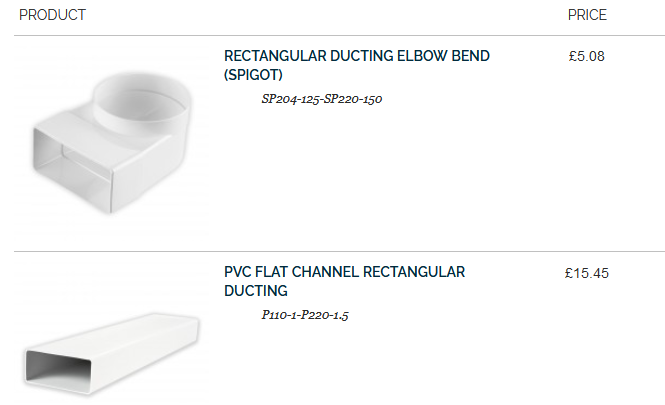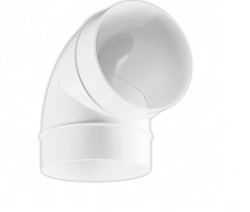
Levo
Members-
Posts
34 -
Joined
-
Last visited
Personal Information
-
Location
Berkshire
Recent Profile Visitors
The recent visitors block is disabled and is not being shown to other users.
Levo's Achievements

Member (3/5)
13
Reputation
-
MVHR is Largely Bogus
Levo replied to DavidHughes's topic in Mechanical Ventilation with Heat Recovery (MVHR)
@JohnMoStrictly speaking my motivation wasn't saving money, it was saving Gas for the environment. But I would never say no to money😁 -
MVHR is Largely Bogus
Levo replied to DavidHughes's topic in Mechanical Ventilation with Heat Recovery (MVHR)
While I agree that the MVHR will benefit more in an airtight house, my 1970s house (50 years old now) has definitely benefited: 1- Pollens filtered out: You just need to increase the intake rate so you have positive pressure inside. That means some air leaks but on the plus side you reduce the amount of pollens coming through gaps. 2- Nice clean air, reduced CO2 etc etc 3- Bonus energy saving. Perhaps not as much as it would have been in an airtight house but still a respectable 30%+ (1-11k/16K) saving. Filters are not that expensive. I have just ordered some G4 filters at €22 for 10 (€26.5 including shipping). That is ~£4.60 per 2xG4 filter change. -
MVHR is Largely Bogus
Levo replied to DavidHughes's topic in Mechanical Ventilation with Heat Recovery (MVHR)
It was for my son and his life quality has definitely improved, as long as he stays inside 😟. But you need to get a system that will take M5 filters as a minimum. I have the Brink Flair with F7. In the autumn/winter I go to 2x G4 and once the Hay fever seasons starts (in about a months time for my son; grass and silver birch), move to F7+G4. -
Heat pumps won’t work in old homes, warns Bosch
Levo replied to Temp's topic in Air Source Heat Pumps (ASHP)
Well, what can I say. 1- I'd like to be prepared. 😁 And why do we need, at least some of us, 300BHP cars? 2- Being an engineer, having some margin has never hurt. If you are spending £15K on a system, what is another grand or two to have that buffer. 3- Also, as I said, I don't quite believe the manufacturers figures. They are a bit like car's MPGs. Only valid on a downhill slope, on a cold day with the wind behind.... -
Heat pumps won’t work in old homes, warns Bosch
Levo replied to Temp's topic in Air Source Heat Pumps (ASHP)
The problem with AirSource HP is that as it gets cold, the efficiency suffers, so you are not able to supply the quoted heat while at the same time your need is increasing. So the system needs to be sized to be able to deliver the required energy at -15C. Otherwise you are toast, well I mean frozen!. I am not sure how realistic the cold temp figures the manufacturers are quoting. I know one needs to take any claim with a pinch of salt but besides that, what if their figures are for somewhere with drier air (lower humidity). That would delay any ice forming on the fans/radiators, therefore improving efficiency. That wouldn't apply to your usual UK weather with near 100% humidity almost every night throughout the winter... As an example, I have friends with a new (less than 10 year) house. I live in a ~50 year old house (maybe 30% smaller than theirs). Assuming their house is much better insulated, I figure they should need less energy to heat their house and at worst, the same amount of heat as we do. In our house we only turn on some of the downstairs radiators, around 5KW max output, and we never have any issues with not being warm. If anything the rest of the lot complain I keep the TV room too warm. I changed all the radiators recently, so know their heat output. My friends on the other hand keep complaining they are never warm on a cold night. So, their system appears not to be able to supply 5 KW. Their outside unit is rated at 15KW!!! So to me, Air source HP is good for mildly cold days but you need some backup for the real cold days. Best solution as the others suggested, install couple of A2A units which will do a lot of the heating and at peak times, use the boiler to back them up. Problem solved for 2-3 grand and fully prepared for that cold day. -
MVHR is Largely Bogus
Levo replied to DavidHughes's topic in Mechanical Ventilation with Heat Recovery (MVHR)
Good point. I figured around £65 a year (20Watts continuous at 35p/KWHr) for electricity. Some of this will be offset by the central heating operating less so less electricity for the burner fan, the water pump etc. Say down to £42. Add two sets of G4 at £4 each set, so totals to £8 a year. That is 500 - 50 = £450. Still a good saving. -
MVHR is Largely Bogus
Levo replied to DavidHughes's topic in Mechanical Ventilation with Heat Recovery (MVHR)
It has been 2 years since I installed a Brink 300/325. My main reason was 1- Hay Fever, 2- cleaner air and finally try and reduce the gas bills to help saving the environment and reducing the cost to achieve the first two. I have checked the gas bills the other day and it seems we were averaging 16K KWHr annually before Brink and it is in the 11K KWHrs afterwards. That is a 5,000 KWHr a year reduction helping the environment and a £500 saving a year for my pocket. So the payback for my DIY install at £3600 will be ~7 years. Just wanted to share. -
I have some cunning plans on this too. The box has Modbus support. And there are plenty examples for designing controllers using Raspberry PI and the like on Youtube. Let's see what I achieve in 5 years ?
-
Haven't started installing yet but bought everything I need (the famous last words...) I got a meter of 160mm foam pipe. I will fit 25cm on each port. It will also serve to reduce vibration. This I will reduce to 150mm using the adapter below from BPC. Then it is 150mm PVC for the bendy bits. I bought a 50cm Lindab filter for extract and 100cm for the supply side. Chose the 125mm size as it has a better attenuation profile and being very short, small impact on the pressure calculations. For the long runs to outside I decided on the 220x90 PVC as it will be easier to hide underneath the loft insulation. For distribution, I bought the Ubbink boxes and 75mm pipes, plenums too. Valves are a mix: For the kitchen I got a Filtered Extract Terminal from Paul Heat Recovery. Quite dear but has a replaceable F3 filter which I am hoping will catch the grease. For the rest I bought a mix of Lindab Airy (for the living rooms), Zehnder Luna (bedrooms) and BPC metal for the studies and bathrooms.
-
MVHR is Largely Bogus
Levo replied to DavidHughes's topic in Mechanical Ventilation with Heat Recovery (MVHR)
Hi, I think we are saying the same thing. I didn't say the TV isn't valuable to someone, as it is definitely valuable to me because I have a large one. Just that it didn't bring back a fiscal value. -
MVHR is Largely Bogus
Levo replied to DavidHughes's topic in Mechanical Ventilation with Heat Recovery (MVHR)
I am about to install an MVHR. All kit ready, waiting for marginally warmer weather. The reasons for my installation are: 1- Pollen filter to help cut down on my son's Hay Fever. 2- Air quality. I suggest people invest in a CO2 monitor and check the levels in a couple of rooms. You would be amazed how quickly it goes to red without ventilation. Trickle vents would bring cold (bitter cold these days) air in and I hate the cold air flow. Example: TV room ~23m2. Begin at 400-500, two people watching TV, 2-3 hours later in red (1200+). CO2 PPM below 800 is deemed good, above 1200 it is bad and it is acceptable in between. Imagine a similar size or smaller bedroom with 2 people sleeping for 8 hours. 3- It will reduce the gas usage somewhat. I mention this not from cost perspective but environmental angle. Some may argue that the CO2 cost of manufacturing etc probably outweighs this. I live in a 1970s detached house. It does have some gaps here and there which I will need to plug but the important rooms are reasonably airtight, so I am hoping it will serve to increase the air quality and remove the need to open windows and causing cold drafts and therefore providing better comfort. Looking at this purely from cost perspective is wrong in my opinion. Anybody who does, I assume (as an example) has no TV in their house as one can argue a TV provides 0 £ value, and is therefore just cost...so impossible to justify. -
Thanks Joe. Got distracted with other stuff at the moment, will follow up on this later.
-
Unfortunately yes ☹️ but having said that I could have got a really good price for them, I might still try. It is one of these things, you look at the price and it seems high and one ignores them. Now that I am looking at the PVC prices, they are not exactly cheap either. On another note, they are real clunky at around 20cm diameter and being soft, need to be handled with kids gloves. At least feels that way. Obviously once you lay them, you can forget about them. "... brown ones are not UV stable..." They will go in the loft and also under rock wool. Not much exposure to UV.
-
" ... to be 300% sure. " ? I am thinking of digging some of the existing insulation to make grooves and than put a 200mm layer on top, whichever pipe I use. Still not sure if I should do the bendy bits out of the unit using the round 160mm pipes and than the long runs using the rectangular ducts. I think these will be a lot more compact and easier to cover. The pressure loss in these is very similar to 150mm round pipes. Wonder if anyone had any experience with these? Good or bad?
-
I've been checking the prices for pipes and how to convert 160mm to 150mm. There are some sites selling "ventilation pipes" at quite high prices but I came across the 160mm underground pipes sold at Toolstation. https://www.toolstation.com/plumbing/160mm-underground-drainage/c267 The elbows are 87.5 degrees but if you are using opposing bends, you can compensate for it and the radius seems a lot rounder than the regular PVC pipes. Has anyone given a thought to these? Any reason not to use them?






